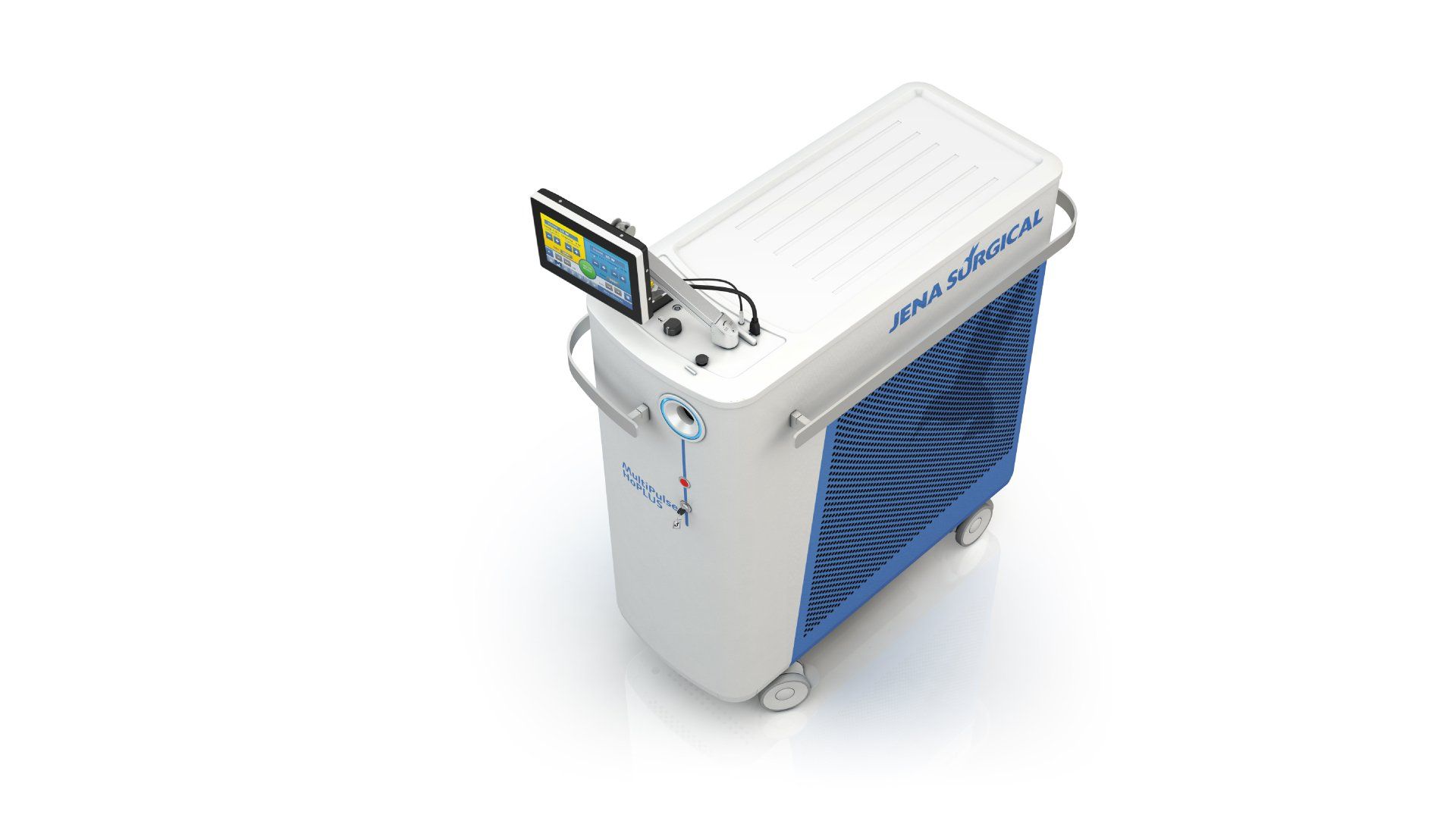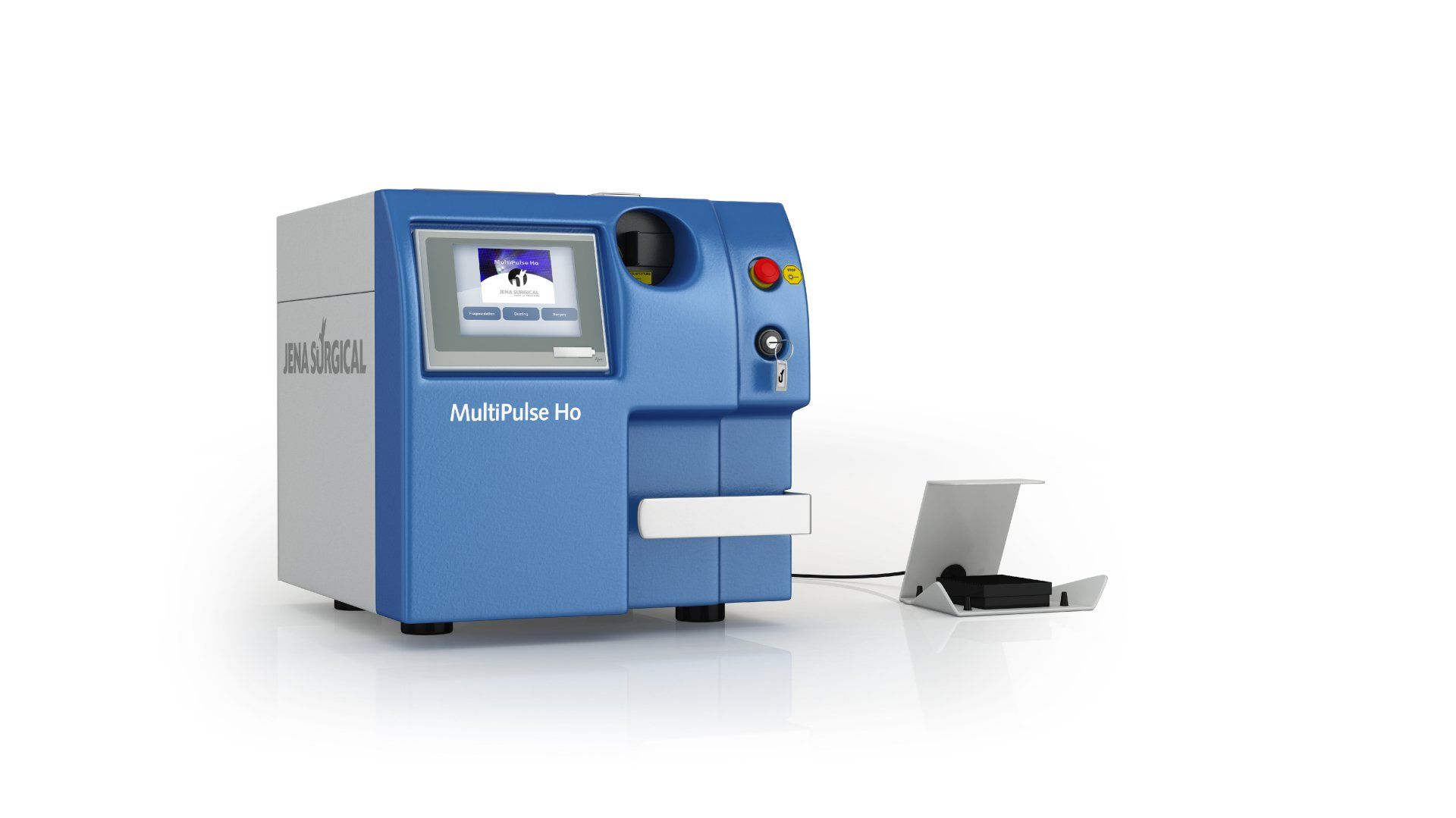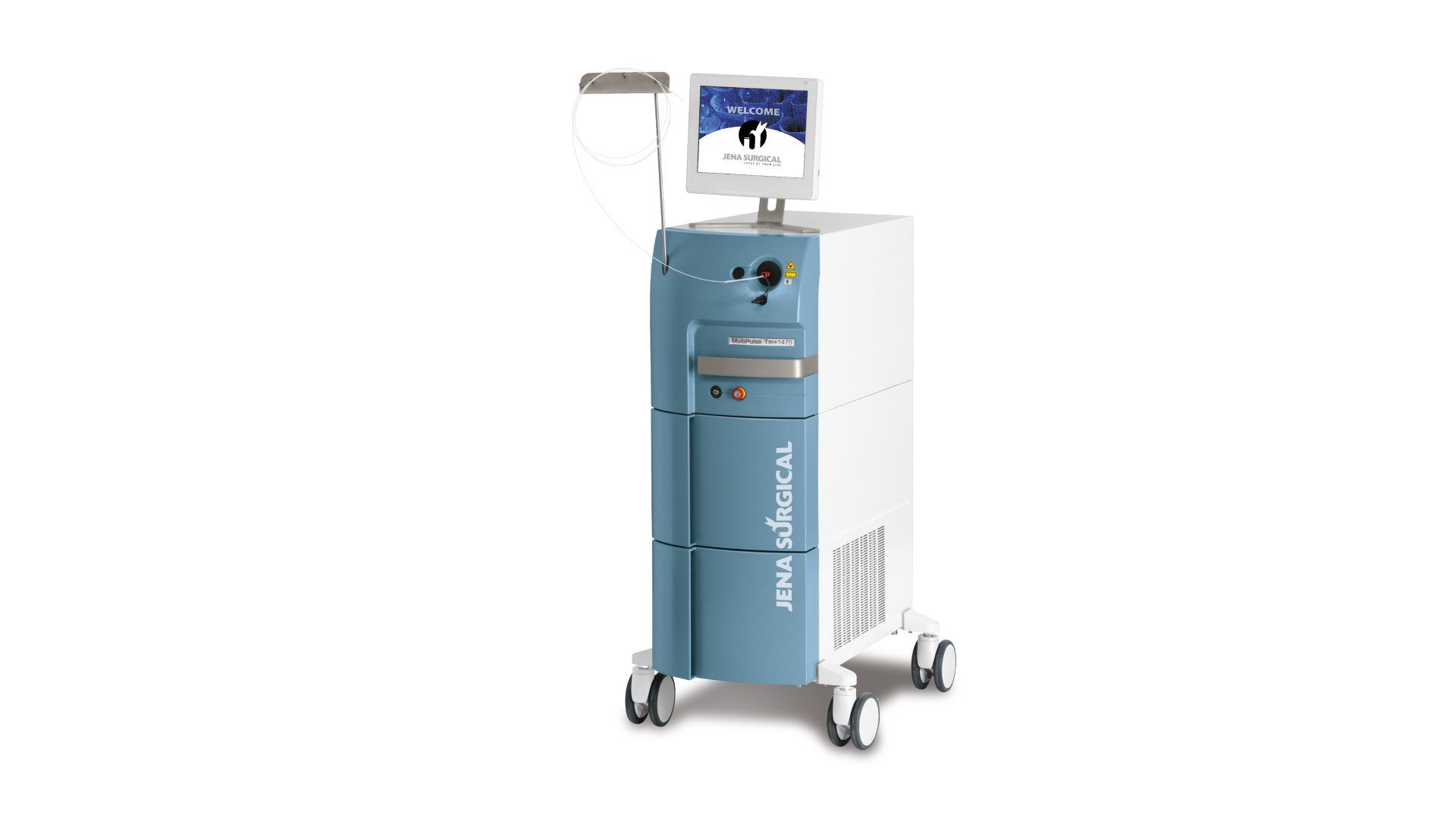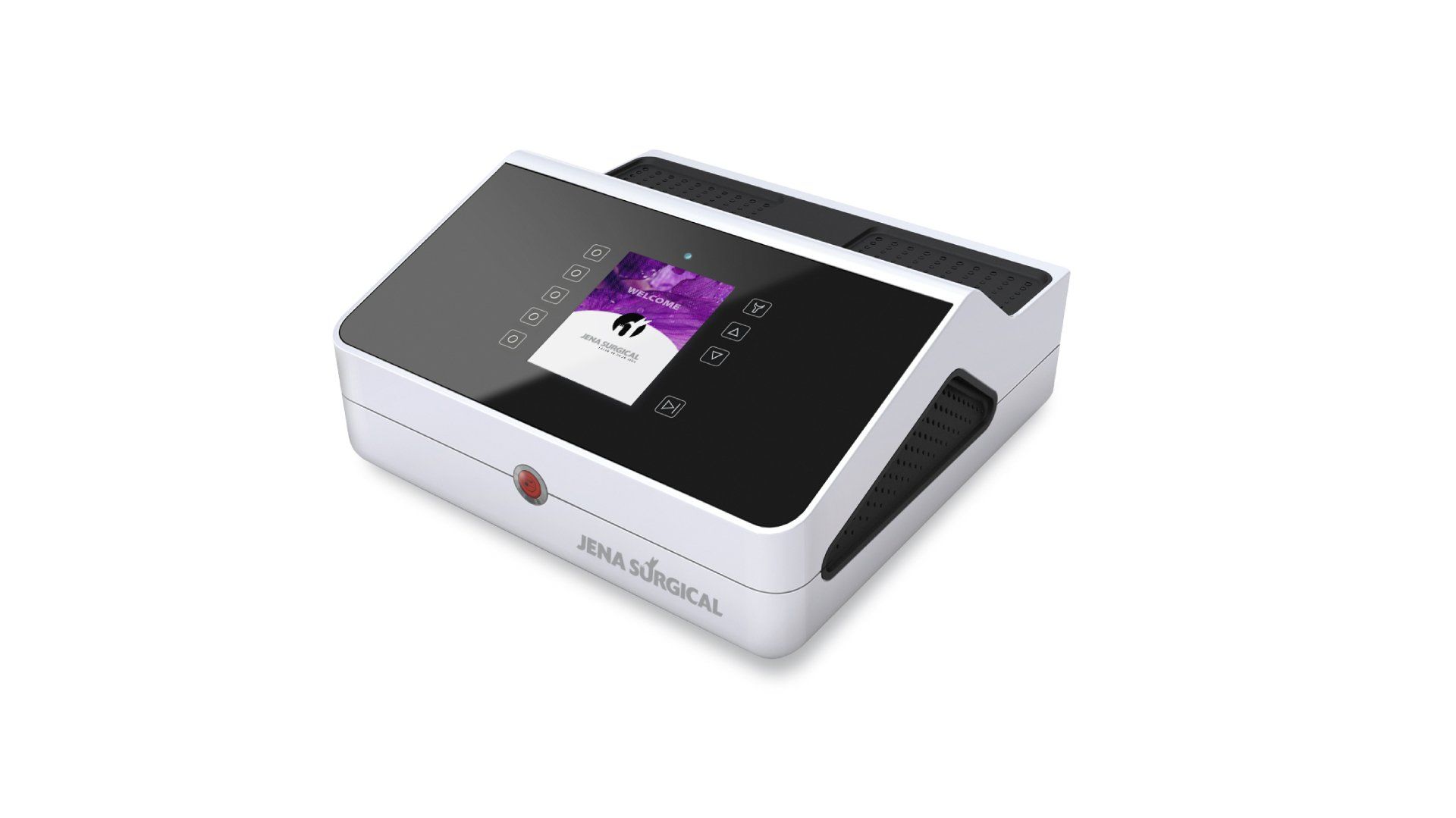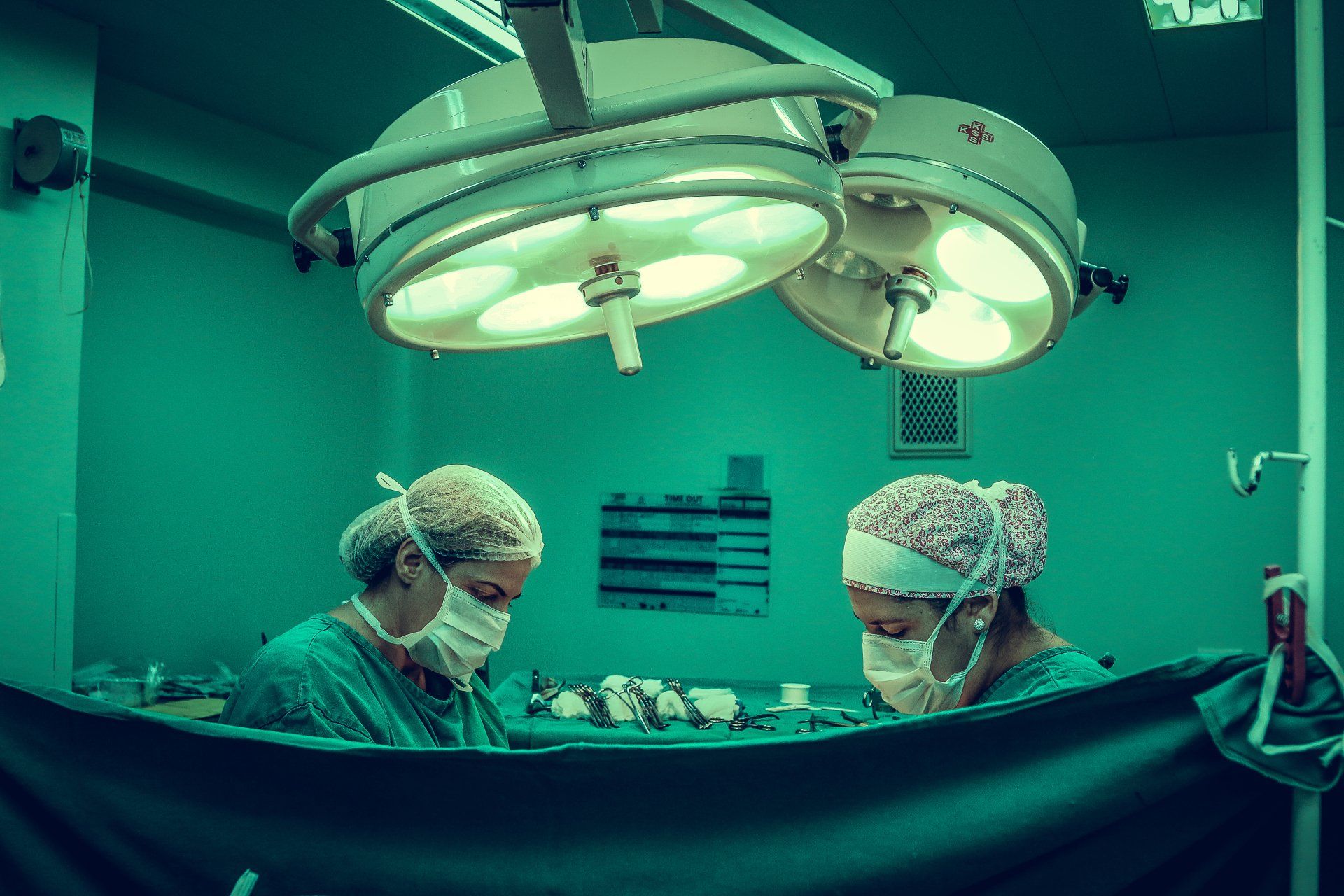GENERAL SURGERY
In the General Surgery fields, laser systems are precious allies for surgeons in many procedures, from routine operations such as gallstone lithotripsy and breast surgery through to the more complex procedures of resection of liver, pancreas, intestine and lung tumors.
The most advanced technology provides surgeons with a vast range of sources and wavelengths for cutting, cauterizing, vaporizing or removing tissue both in endoscopic and open surgeries.
Each wavelength has its own specific effect on the biological tissue. The combination of laser-tissue interaction, the transmission system that can be used and the laser operation parameters determine the overall final effect of the laser system during surgery.
Main advantages
In the hands of a specialized and correctly-trained surgeon, the use of lasers in the theater makes it possible to:
• cut or remove diseased tissue without damaging the adjacent healthy tissues
• reduce or destroy tumors and lesions
• cauterize (seal) blood vessels to reduce blood loss
• block nerve terminals to reduce post-surgical pain and discomfort
• reduce the risk of incision infection
• seal lymph vessels to minimize swelling and prevent malignant cell diffusion
• minimize the size of the area involved by the surgery
• obtain faster wound healing
Due to their power and precision, systems using a CO₂ and thulium laser source are particularly well-suited to use in surgery for the reduction or destruction of many types of tumor with new applications being discovered all the time.
CO₂ lasers are first and foremost surgical instruments used for cutting tissue or ablation and reducing blood loss, by virtue of the heat reaction they release. This type of laser is used to remove superficial layers of skin, without penetrating deeper while the surgeon is able to monitor the penetration depth constantly during surgery.
Machines
The Asclepion Laser Technologies range for general and cancer surgery also includes the MultiPulse Tm+1470 system, which combines a 1,940 nm thulium laser and 1,470 nm raman laser in a single fiber.
This high-performance surgical instrument for the resection of various different types of tumor (liver, pancreas, lungs, intestine, etc.) guarantees the surgeon precise control over both cutting and ablation through the intuitive regulation of the main operating parameters.
The MultiPulse Tm+1470 system allows the surgeon to work quickly with an outstanding hemostatic effect, that can be adjusted as required, using a pedal and suitably blending the two wavelengths available.
The laser beam can be directed onto the organ to be operated on using an endoscope: this allows the surgeon to operate on parts of the body that could previously only be reached with traditional open surgery, by guaranteeing a clear and limpid view of the operating field.
In General Surgery, the combination of laser and endoscope makes it possible to perform very precise and accurate procedures. In most cases, compared to the more invasive techniques, the use of surgical lasers makes it possible to reduce the amount of tissue removed, with very little lateral thermal damage, excellent hemostasis and aerostasis (in the case of metastases in the lungs).
